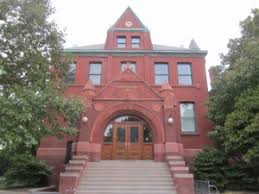Architecture Program
Document Type
Article
Date of this Version
2011
Citation
In Conjuring the Real:The Role of Architecture in Eighteenth- and Nineteenth-Century Fiction, edited by Rumiko Handa and James Potter, foreword by Iain Borden (Lincoln: University of Nebraska Press, 2011), pp. 1-20 & 215-218.
Abstract
Buildings give an immediate presence to the historical or fictional world, which otherwise is unknown or unfamiliar to the audience. The portrayal of a building’s concrete and specific substance makes the world come alive, although the building itself is a mere segment of the world that it represents. This book will trace the genealogy of this representational role of architecture, going back through the history of film and then further in literature, art, and theater, and identify its pedigree in the nineteenth century, where authors, artists, and stage managers used thorough depictions of buildings to effectively feed the audience’s historical imagination.
In the Western world, the period from the mid-eighteenth to the nineteenth century widely is acknowledged for its historical consciousness. Modern historiography was born, novels set in a specific historical time period were written, revivals of Shakespearean historical plays were produced, and historical paintings were made. Buildings and architects played a part in this widespread cultural phenomenon. Historical buildings became tourist destinations and were frequented by antiquarians, literary authors, and painters, both amateur and professional. Ruinous ones were especially popular because their missing roofs and decayed stones, as well as the growing mosses and ivies on them, clearly indicated the passage of time. Medieval buildings, which had been neglected or detested by eyes trained in classicism, began to bear new national significance. Architectural draftsmen were hired by publishers to travel to these buildings and publish their reports in books and magazines. Architects designed artificial ruins or buildings in past styles. What is interesting about the nineteenth-century historical consciousness is that serious studies of historical events and fictional representations of the past were not necessarily mutually exclusive. Instead, historical research was motivated by a romantic longing for the past, and historical knowledge was incorporated into the imagined past.
Included in
American Art and Architecture Commons, Architectural History and Criticism Commons, Interdisciplinary Arts and Media Commons, Literature in English, British Isles Commons, Literature in English, North America Commons



Comments
Copyright (c) 2011 Board of Regents of the University of Nebraska.